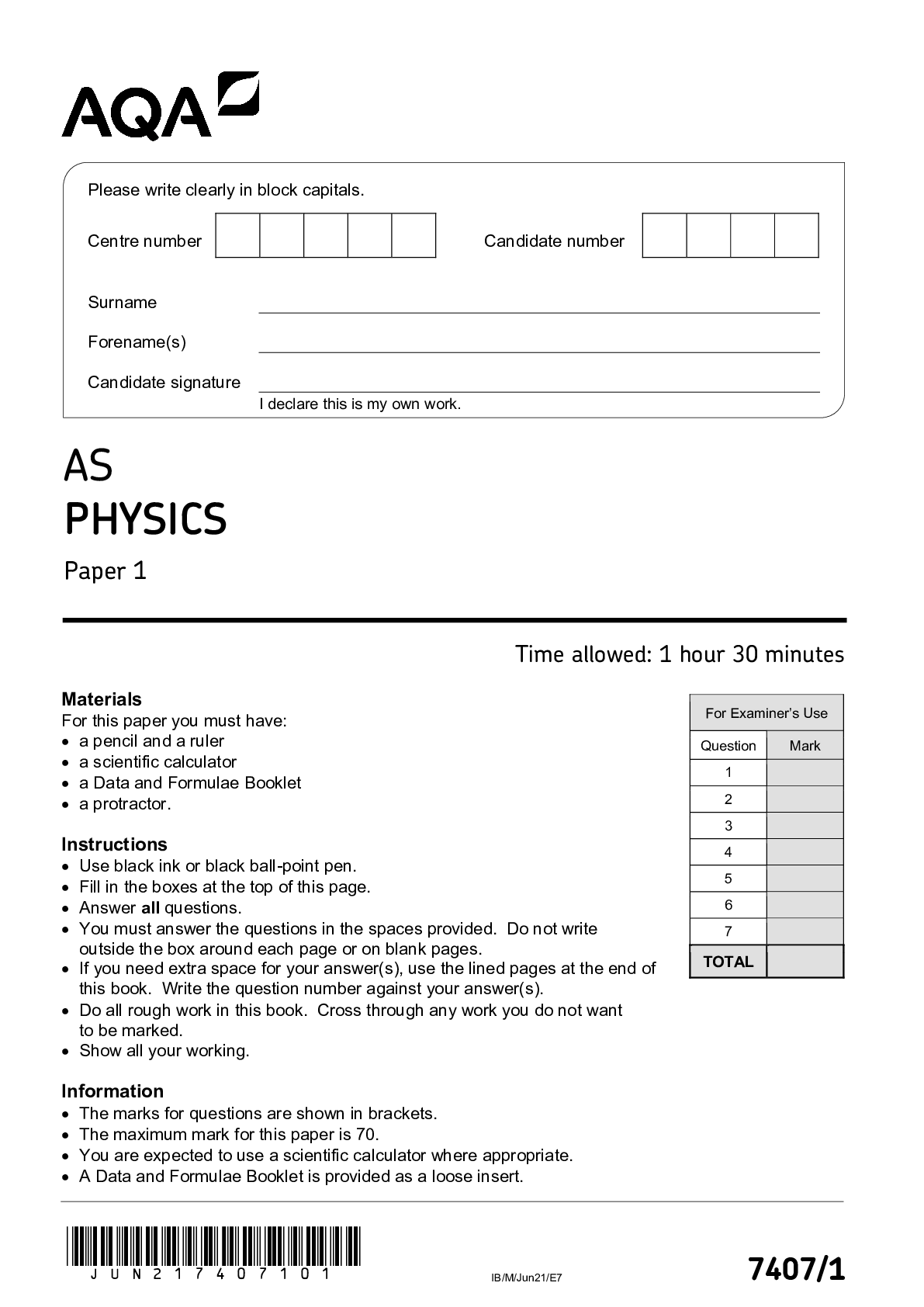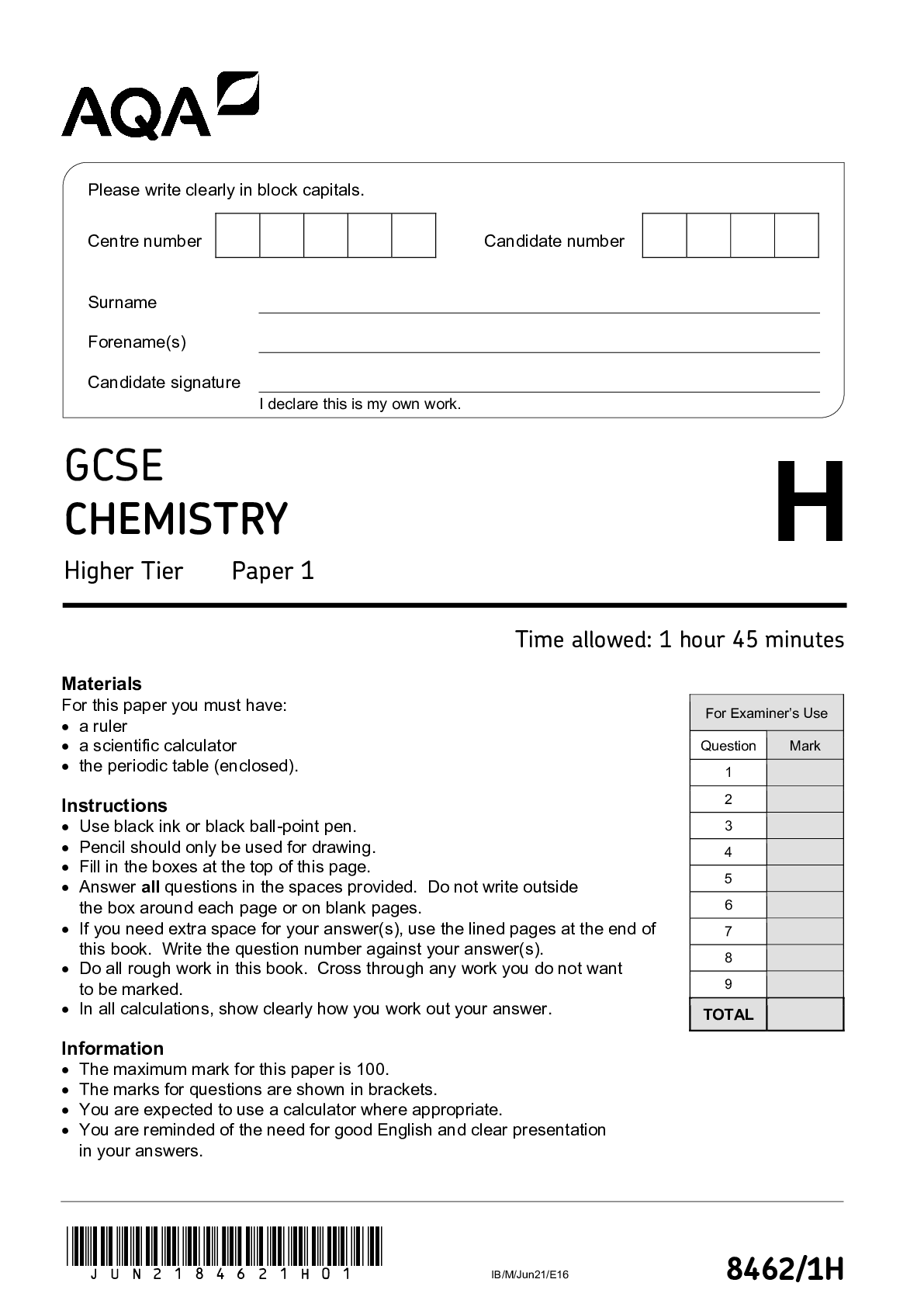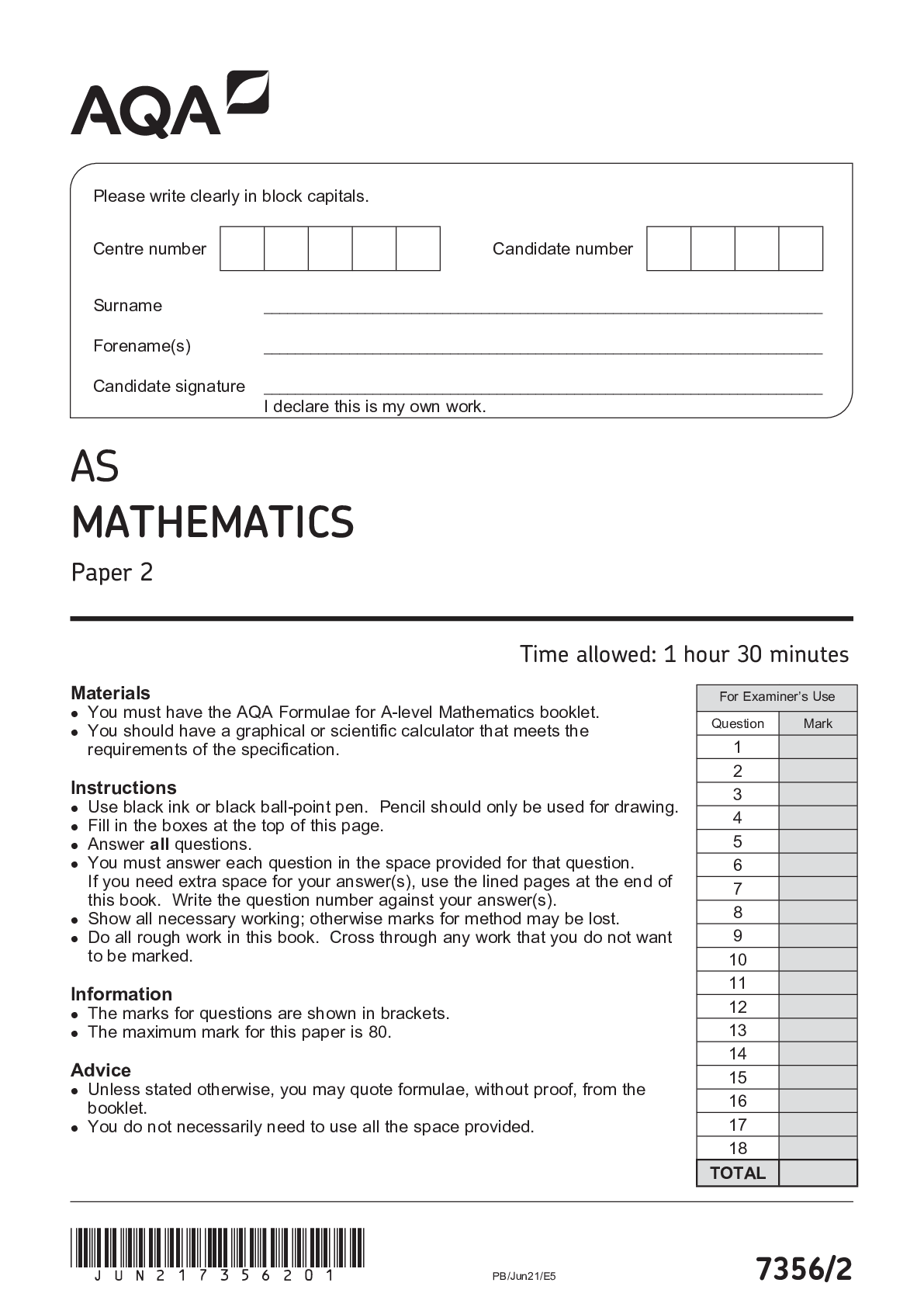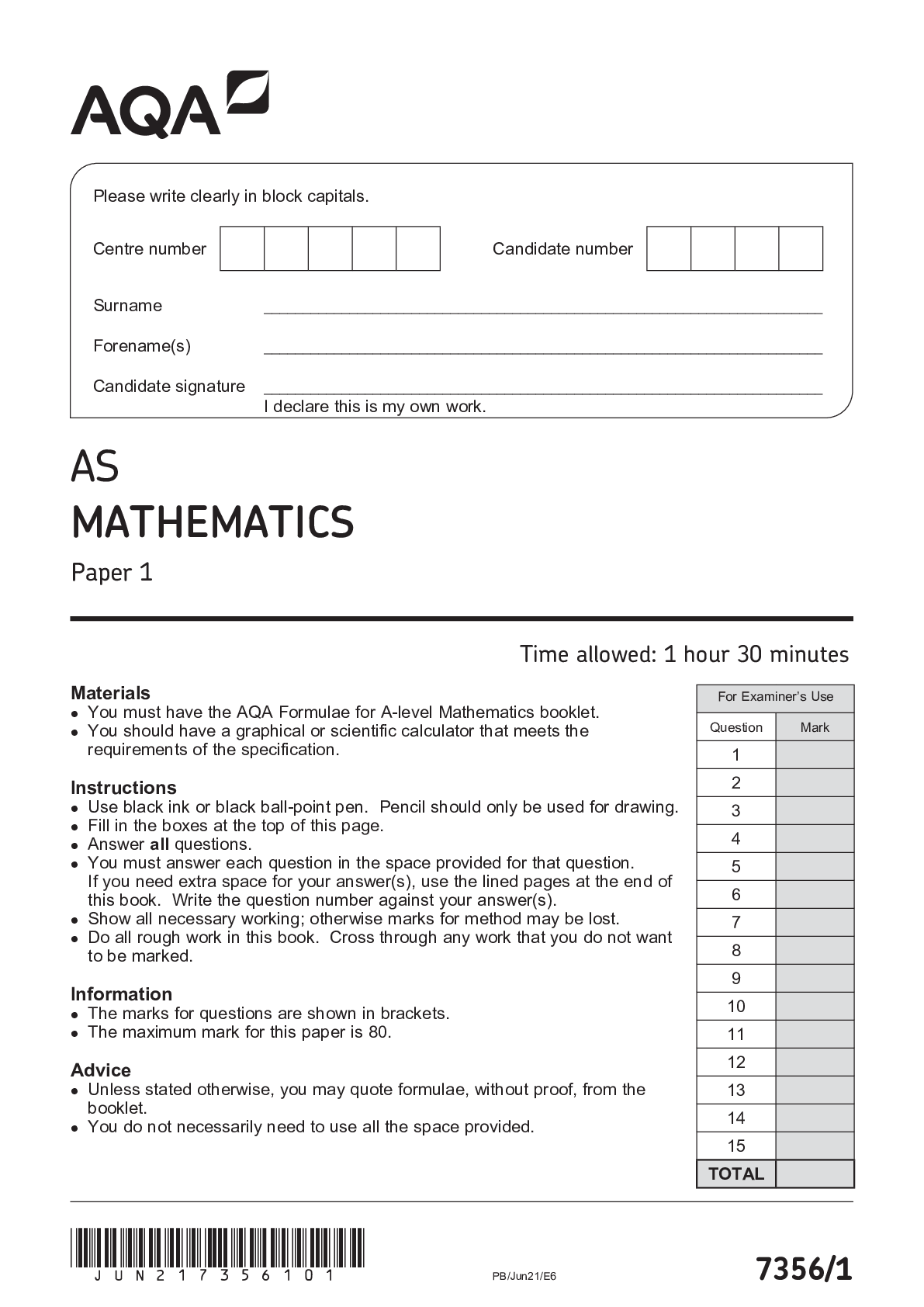OCR Interchange October 2021 A Level Physics/ H556/03 Unified physics
Document Content and Description Below
October 2021 A Level Physics A H556/03 Unified physics Time allowed: 1 hour 30 minutes * H 5 5 6 0 3 * INSTRUCTIONS • Use black ink. You can use an HB pe... ncil, but only for graphs and diagrams. • Write your answer to each question in the space provided. If you need extra space use the lined pages at the end of this booklet. The question numbers must be clearly shown. • Answer all the questions. • Where appropriate, your answers should be supported with working. Marks might be given for using a correct method, even if your answer is wrong. INFORMATION • The total mark for this paper is 70. • The marks for each question are shown in brackets [ ]. • Quality of extended responses will be assessed in questions marked with an asterisk (*). • This document has 20 pages. ADVICE • Read each question carefully before you start your answer. Turn over Answer all the questions. 1 Fig. 1 shows a high-speed electric train. sliding contact I I overhead cable at +25 kV motor turning wheels earthed rails at 0 kV Fig. 1 The potential difference between the overhead cable and the rails on the ground is 25 kV. The sliding contact on the top of the train constantly touches the overhead cable. The overhead cable supplies a current I to the electric motor of the train. The motor turns the wheels. The train experiences a resultant forward force F. The total mass of the train is 2.1 × 105 kg. (a) The train accelerates from rest. The value of F is 190 kN for speeds less than 6.0 m s–1. (i) Show that the train’s acceleration is about 1 m s–2. (ii) Calculate the distance s that the train travels to reach a speed of 6.0 m s–1. [1] s = ..................................................... m [2] (iii) The speed of the train is v. During one period of its journey, the train accelerates from v = 30 m s–1 to v = 60 m s–1. The graph of F against v for this period is shown below. 150 F / kN 100 50 30 40 50 60 v / m s–1 1. Use the graph to show that output power of the electric motor during this period is constant at about 4 MW. [3] 2. Calculate the current I in the electric motor when the train is travelling at 50 m s–1. I = ...................................................... A [2] Question 1 is continued on page 4 (b) The overhead cable in Fig. 1 must be tensioned. It is constructed from several equal lengths of wire. Some data for one length of this wire are shown below. • length = 1500 m • area of cross-section = 1.1 × 10–4 m2 • resistivity = 1.8 × 10–8 Ω m • the Young modulus = 1.2 × 1010 Pa • strain = 1.3% (i) Calculate the resistance R of one length of wire. R = ..................................................... Ω [2] (ii) Calculate the tension T in one length of wire. T = ..................................................... N [3] 2 This question is about a light-dependent resistor (LDR). (a) A student connects a potential divider circuit as shown below. It contains an LDR. 12 V The fixed resistor has resistance 1500 Ω. The battery has electromotive force (e.m.f.) 12 V and negligible internal resistance. The voltmeter has extremely high resistance. (i) When the LDR is covered, its resistance is 3000 Ω. Calculate the voltmeter reading. voltmeter reading = ..................................................... V [2] (ii) When fully illuminated, the resistance of the LDR is 100 Ω. Show that the voltmeter reading changes by more than 7 V. [1] Question 2 is continued on page 6 *(b) The current in an LDR depends on the intensity of light incident on it. A student decides to alter the intensity of light incident on an LDR by using sheets of tracing paper and a light source. The diagram below shows part of an arrangement suggested by the student. sheets of tracing paper to circuit It is suggested that the current I in the LDR is given by the expression I = ke–nx where x is the total thickness of the sheets of tracing paper, and k and n are constants. Describe how the student could carry out an experiment to verify the validity of this expression and determine k and n. Include in your answer • a circuit diagram • a possible table for the results, including the headings • the graph plotted to determine k and n • any precautions taken to improve the quality of the results. [6] ................................................................................................................................................... ................................................................................................................................................... ................................................................................................................................................... ................................................................................................................................................... ................................................................................................................................................... ................................................................................................................................................... ................................................................................................................................................... ................................................................................................................................................... ................................................................................................................................................... ................................................................................................................................................... ................................................................................................................................................... ................................................................................................................................................... ................................................................................................................................................... ................................................................................................................................................... ................................................................................................................................................... Additional answer space if required ................................................................................................................................................... ................................................................................................................................................... ................................................................................................................................................... ................................................................................................................................................... ................................................................................................................................................... ................................................................................................................................................... ................................................................................................................................................... ................................................................................................................................................... ................................................................................................................................................... ................................................................................................................................................... 3 This question is about a space probe which is in orbit around the Sun. (a) Define gravitational potential energy of an object at a point in a gravitational field. ................................................................................................................................................... .............................................................................................................................................. [1] (b) The space probe has mass 810 kg. The orbital radius of the space probe is 1.5 × 1011 m. The orbital period of the space probe around the Sun is 3.16 × 107 s. The mass of the Sun is 2.0 × 1030 kg. (i) Show that the magnitude of the gravitational potential energy of the space probe is about 7 × 1011 J. [2] (ii) Show that the kinetic energy of the space probe is half the value of your answer to (b)(i). [3] (iii) Calculate the total energy of the space probe. total energy = J [1] (c) The power source for the instrumentation on board the space probe is plutonium-238, which provides 470 W initially. Plutonium-238 decays by α-particle emission with a half-life of 88 years. The kinetic energy of each α-particle is 8.8 × 10–13 J. (i) Calculate the number N of plutonium-238 nuclei needed to provide the power of 470 W. N = [3] (ii) Calculate the power P still available from the plutonium-238 source 100 years later. P = W [3] 4 This question is about an electric cooker, which consists of an oven and an electromagnetic induction hob. *(a) The oven is not sealed, so the air inside remains at atmospheric pressure of 1.0 × 105 Pa. The volume of the oven is 0.065 m3. The air inside the oven behaves as an ideal gas. The temperature of the oven increases from room temperature to 200 °C. Show that the internal energy of the air in the oven is the same at all temperatures of the oven. Support your answer with an explanation of the motion of the air molecules in terms of kinetic theory. [6] ................................................................................................................................................... ................................................................................................................................................... ................................................................................................................................................... ................................................................................................................................................... ................................................................................................................................................... ................................................................................................................................................... ................................................................................................................................................... ................................................................................................................................................... ................................................................................................................................................... ................................................................................................................................................... ................................................................................................................................................... ................................................................................................................................................... ................................................................................................................................................... ................................................................................................................................................... ................................................................................................................................................... Additional answer space if required ................................................................................................................................................... ................................................................................................................................................... ................................................................................................................................................... ................................................................................................................................................... ................................................................................................................................................... ................................................................................................................................................... ................................................................................................................................................... ................................................................................................................................................... ................................................................................................................................................... ................................................................................................................................................... Question 4 continues on page 12 (b) The electromagnetic induction hob is shown in Fig. 4.1. metal saucepan glass-ceramic cover cooking areas Fig. 4.1 Each cooking area has a coil below the glass-ceramic cover. When switched on, the coils carry a high-frequency alternating current. A metal saucepan is placed above one of the coils. A large alternating current is induced in the saucepan base, and this causes the saucepan to heat up. (i) Fig. 4.2 shows one of the coils at a time when the current is in the direction indicated by the arrows. Fig. 4.2 On Fig. 4.2, sketch the magnetic field pattern for the current-carrying coil. [2] (ii) Fig. 4.3 shows the path of the large alternating current induced in the metal base of the saucepan. induced alternating current Fig. 4.3 Explain the origin of this large current. ........................................................................................................................................... ........................................................................................................................................... ........................................................................................................................................... ........................................................................................................................................... ........................................................................................................................................... ...................................................................................................................................... [2] (iii) Explain why it would be safe for a person to place a hand on the cooking area before the saucepan is put onto it. .................................................................................................................................... .................................................................................................................................... .................................................................................................................................... ............................................................................................................................... [2] 5 A student is investigating stationary waves in the air column inside a tube, using the apparatus shown in Fig. 5.1. The loudspeaker emits sound of frequency f and wavelength λ. The tube is initially fully immersed in the water. The student then slowly raises the tube until the oscilloscope trace shows its first maximum. A stationary wave of fundamental frequency f is produced in the air column. When this occurs, the student measures the length l of the tube above the water level. loudspeaker to to signal generator oscilloscope microphone air l tube water Fig. 5.1 (a) Explain how a stationary wave of fundamental frequency is produced and state the relationship between l and λ. ................................................................................................................................................... ................................................................................................................................................... ................................................................................................................................................... ................................................................................................................................................... ................................................................................................................................................... ................................................................................................................................................... ................................................................................................................................................... ............................................................................................................................................. [4] (b) Theory suggests that f and l are related by the equation 4(l + k) = v , where v is the speed of sound in air and k is a constant. f The student measures corresponding values of l and f and plots a graph of l against 1 . f The data points, error bars and the line of best fit drawn by the student are shown in the graph below. 0.27 l / m 0.25 0.23 0.21 0.19 0.17 0.15 2.0 2.2 2.4 2.6 2.8 3.0 3.2 3.4 1 / 10–3 s v f (i) Show that the line of best fit has gradient = 4 and y-intercept = – k. [2] (ii) Calculate v from the gradient of the line of best fit. v = ............................................... m s–1 [3] © OCR 2021 Question 5 is continued on page 16 Turn over (c) The experiment is repeated using the same tube and an unlabelled tuning fork, as shown in Fig. 5.2. The distance l is measured as 22 cm. to oscilloscope microphone air tube tuning fork l water Fig. 5.2 The frequency of the vibrating tuning fork is F. (i) Use the line of best fit on the graph to estimate F. F = Hz [2] (ii) The percentage uncertainty in the value of F can be written as 100 ΔF where ΔF is the absolute uncertainty in F. F Use the rules for combining uncertainties to write an expression for the percentage uncertainty in the value of F in terms of v and its absolute uncertainty Δv, l and its absolute uncertainty Δl, and k and its absolute uncertainty Δk. [2] © OCR 2021 Turn over 6 The London Eye, shown rotating anticlockwise in Fig. 6.1, is a giant wheel which rotates slowly at a constant speed. pod 40° R tourist floor F W Fig. 6.1 Fig. 6.2 Tourists stand in pods around the circumference of the wheel. The floor remains horizontal at all times. At time t = 0, a tourist who has a weight W of 650 N enters a pod at the bottom of the wheel. Fig. 6.2 shows the forces acting on the tourist at a later time, when the angle between the pod’s position and the centre of the wheel is 40° above the horizontal. R is the normal contact force and F is friction. (a) The resultant upward force (R – W) on the tourist changes during the 30 minutes of the rotation of the London Eye as shown in Fig. 6.3. force / N 0.0 (R – W) graph – 0.0 Fig. 6.3 Explain how the graph in Fig. 6.3 shows that the magnitude of the centripetal force on the tourist during the rotation is 0.050 N. ................................................................................................................................................... ................................................................................................................................................... .............................................................................................................................................. [1] (b) (i) Explain why the horizontal force F between the floor and the tourist is necessary. ........................................................................................................................................... ........................................................................................................................................... ........................................................................................................................................... ........................................................................................................................................... ........................................................................................................................................... ...................................................................................................................................... [2] (ii) Draw on Fig. 6.3 the variation of the horizontal force F during the 30 minutes of the anticlockwise rotation of the London Eye. Take forces to the right to be positive. [2] (iii) Calculate the magnitude of force F when the pod is at the position shown in Fig. 6.2, at 40° above the horizontal. F = ..................................................... N [2] (c) Calculate the distance d of the centre of mass of the tourist from the centre of rotation of the London Eye. d = ..................................................... m [3] END OF QUESTION PAPER © OCR 2021 ADDITIONAL ANSWER SPACE If additional space is required, you should use the following lined page(s). The question number(s) must be clearly shown in the margin(s). .................................................................................................................................................................. .................................................................................................................................................................. .................................................................................................................................................................. .................................................................................................................................................................. .................................................................................................................................................................. .................................................................................................................................................................. .................................................................................................................................................................. .................................................................................................................................................................. .................................................................................................................................................................. .................................................................................................................................................................. .................................................................................................................................................................. .................................................................................................................................................................. .................................................................................................................................................................. .................................................................................................................................................................. .................................................................................................................................................................. .................................................................................................................................................................. .................................................................................................................................................................. .................................................................................................................................................................. .................................................................................................................................................................. .................................................................................................................................................................. [Show More]
Last updated: 1 year ago
Preview 1 out of 20 pages
.png)
Also available in bundle (1)
.png)
OCR Interchange A Level Physics Question Papers and Mark Schemes October 2021
OCR Interchange A Level Physics Question Papers and Mark Schemes October 2021
By Axeldee 2 years ago
$45
8
Reviews( 0 )
Document information
Connected school, study & course
About the document
Uploaded On
Feb 26, 2022
Number of pages
20
Written in
Additional information
This document has been written for:
Uploaded
Feb 26, 2022
Downloads
0
Views
235

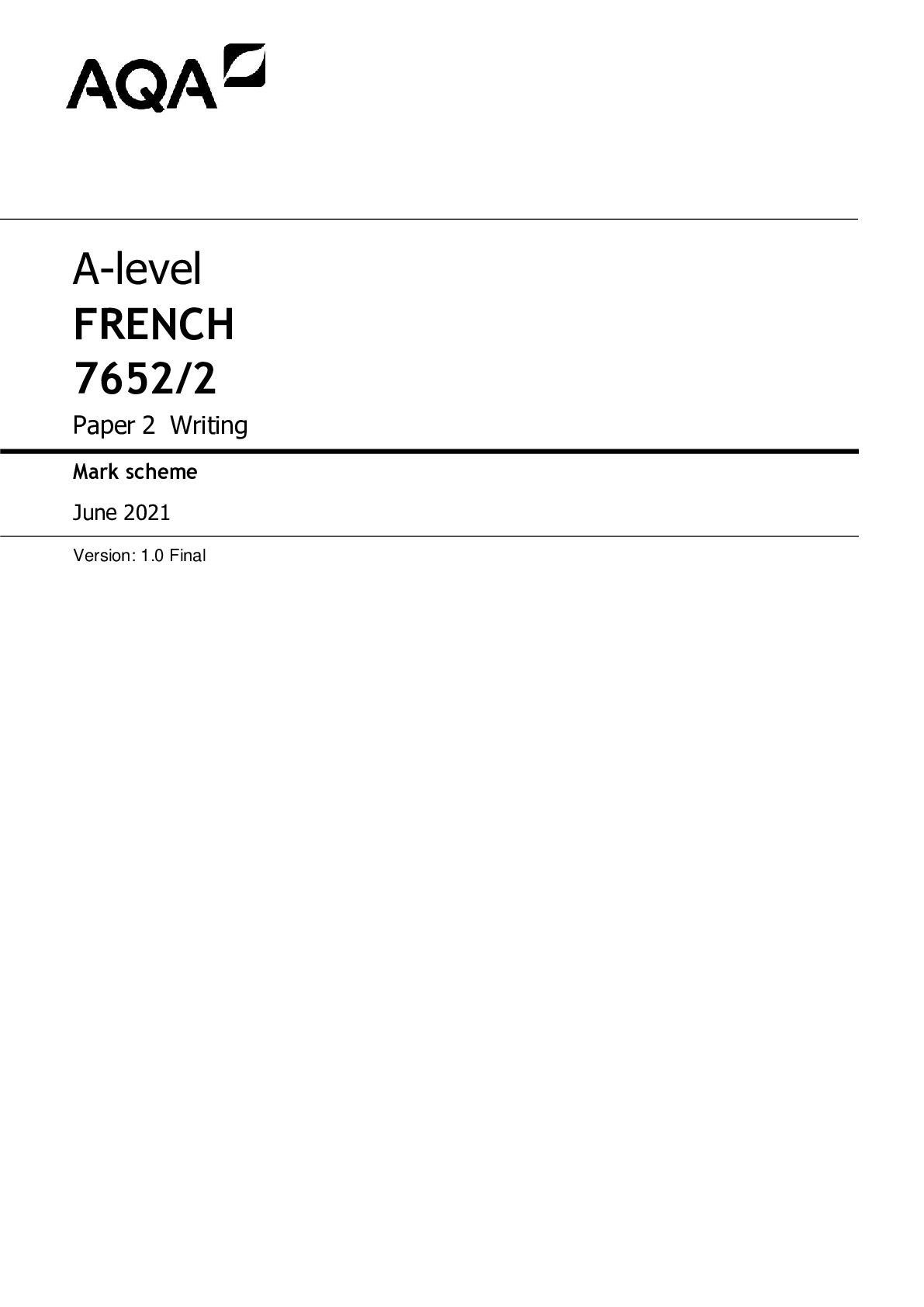
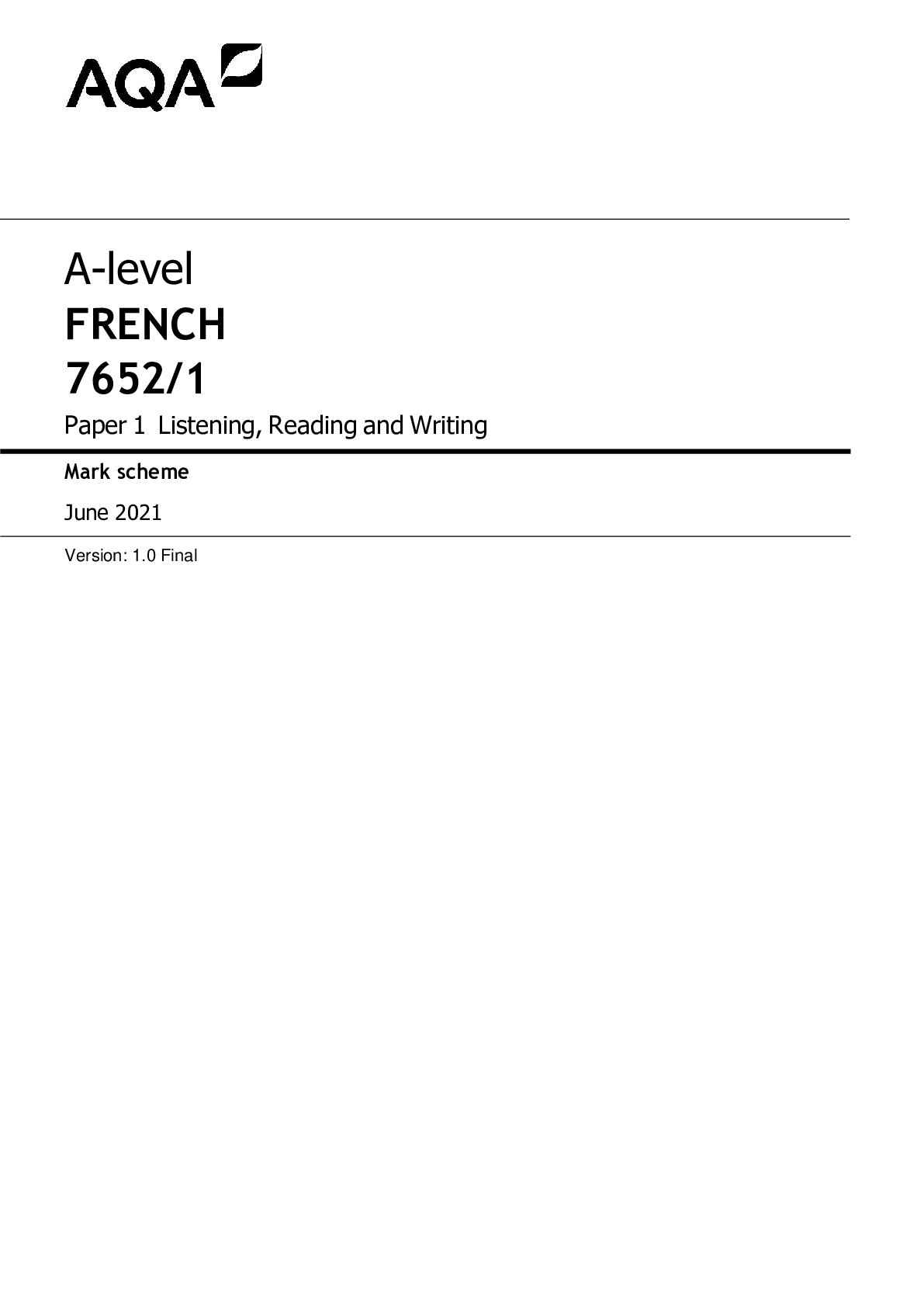
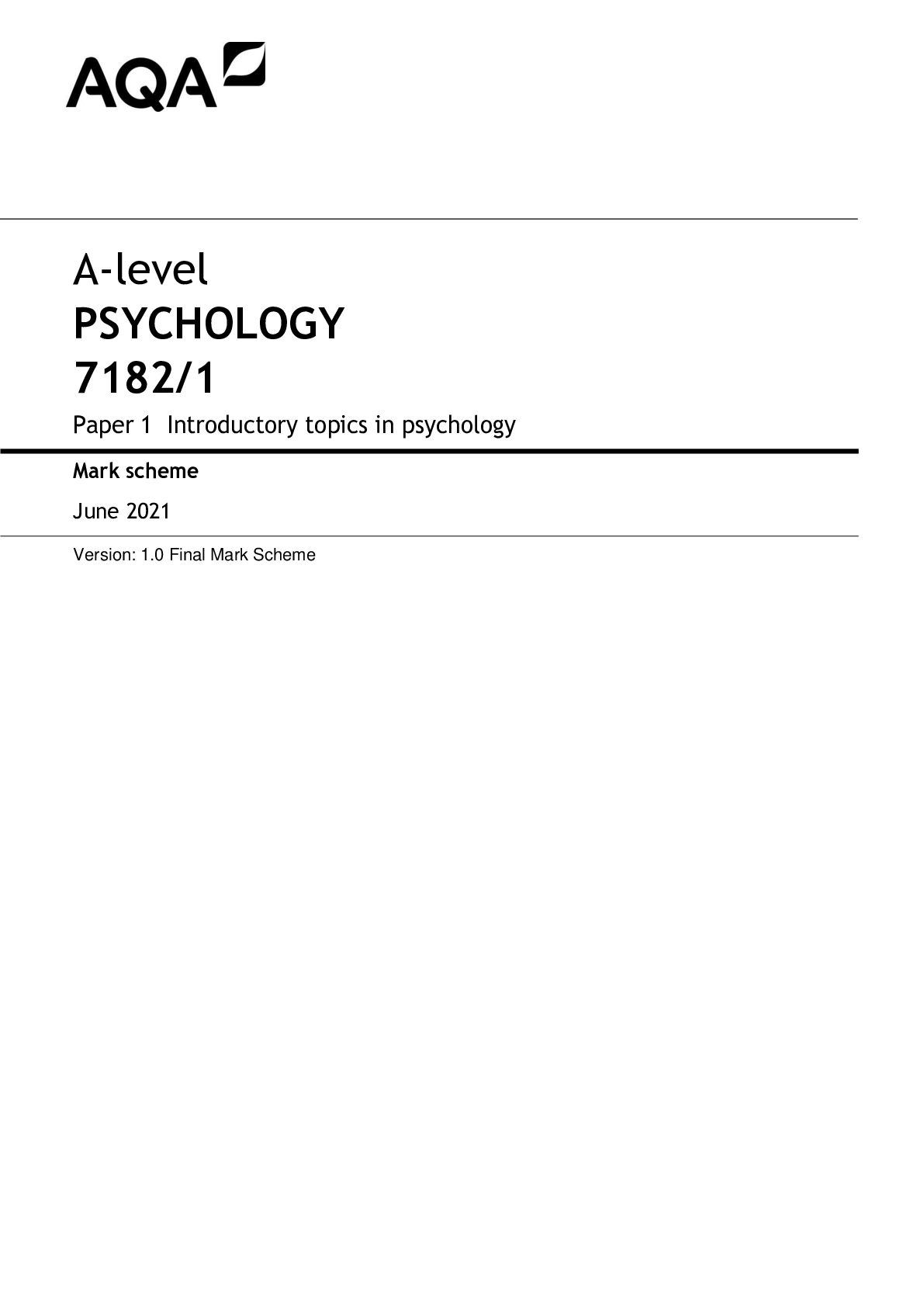
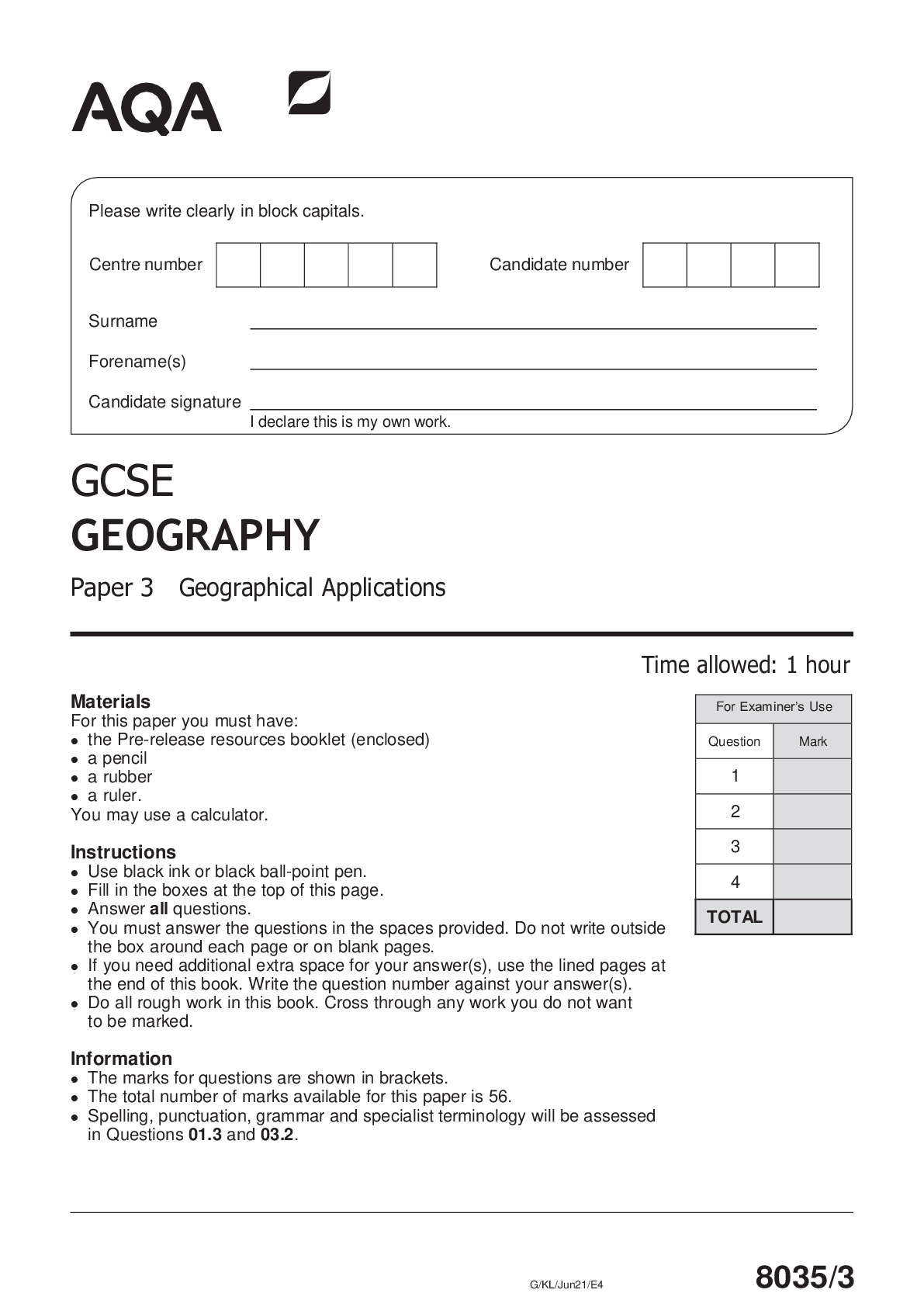
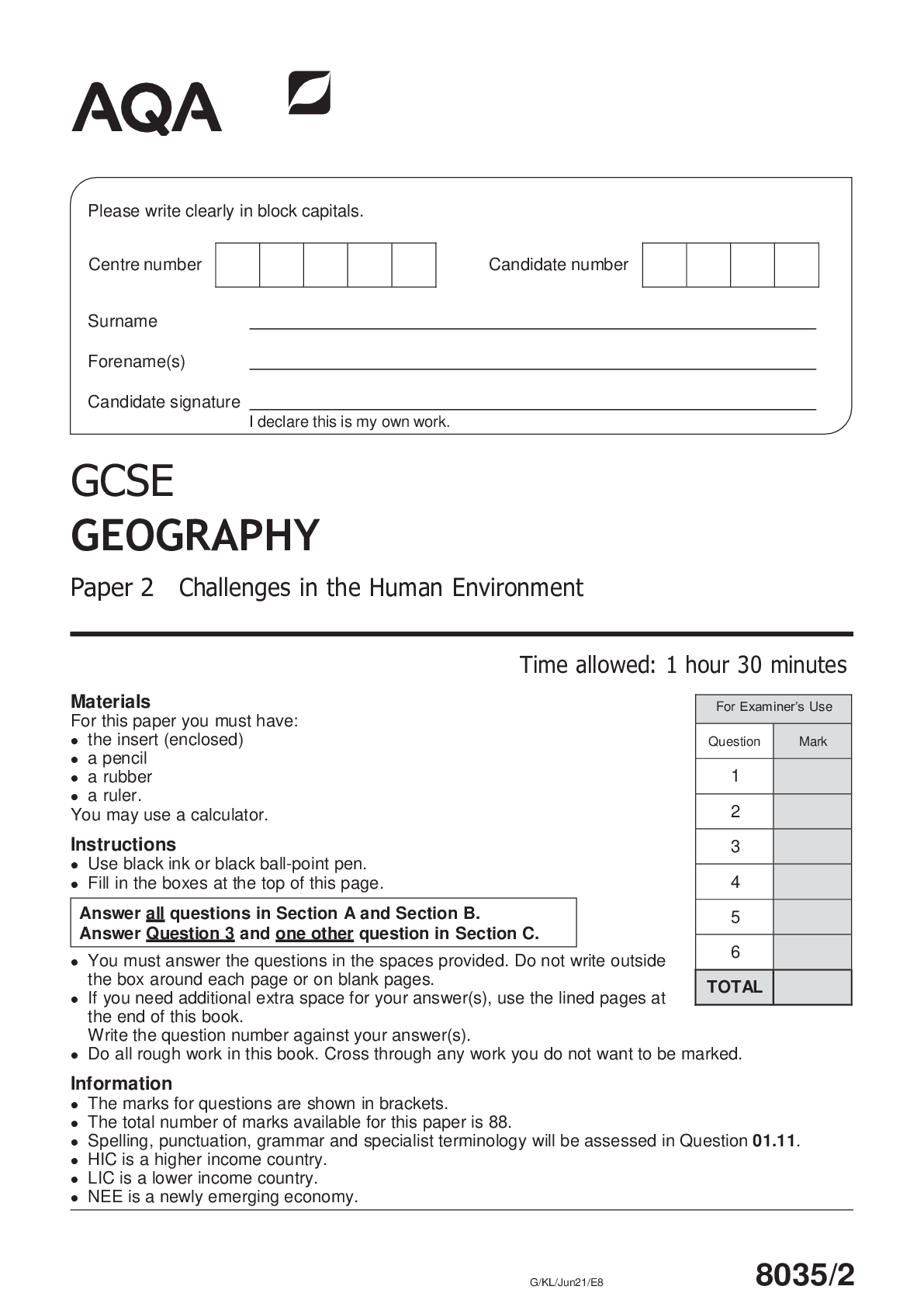
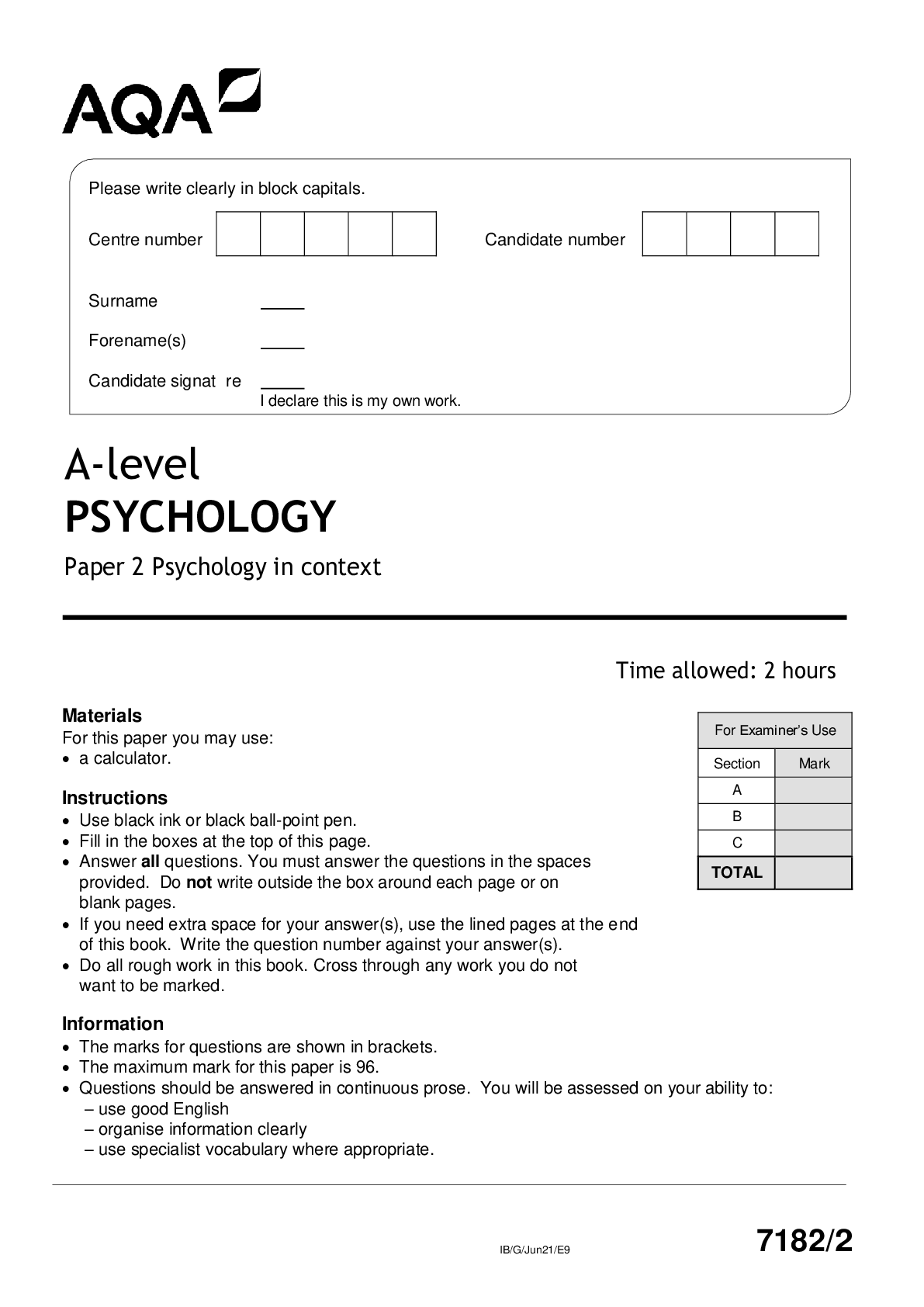
 (1).png)
 (1).png)
 (1).png)
 (1).png)
.png)
.png)
 (1).png)
.png)
.png)
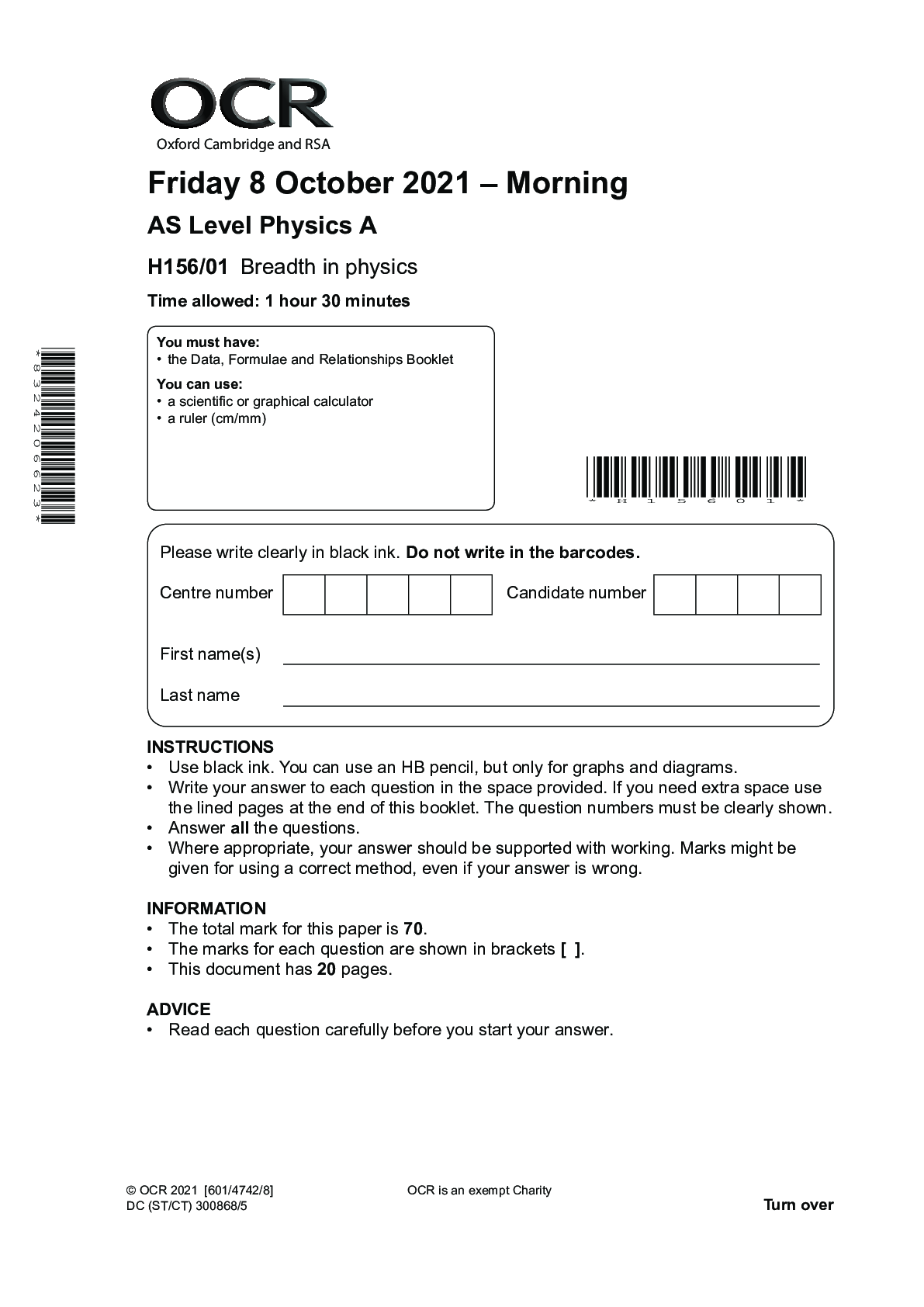
.png)
.png)
.png)
.png)

